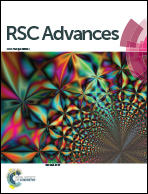Rhizoremediation of petroleum hydrocarbon, prospects and future
Abstract
Oil refineries generate several tones of oily waste which is dumped in an open pit within the vicinity of oil field. The disposal or removal of such waste through excavation is costly and laborious. Therefore oil refineries are looking for rapid and economic methods to remediate such waste. Rhizoremediation is successfully adapted to remediation hydrocarbon contaminated soils by the oil refineries. This is a technique in which plants and microbes are used to remediate oily waste contaminated sites. The main aim of the study was to introduce an economic and rapid rhizoremediation technique to oil refineries in which plant and microbes are used to enhance the natural degradation process of oily sludge contaminated soils. The rhizosphere of oily sludge is composed of several genera of hydrocarbon degrading microbes naturally. When such microbes are inoculated to oily sludge rhizosphere are capable of degrading hydrocarbons more likely because of presence of root exudates that can provide enough carbon, nutrients and oxygen for microbes to increase in number thus accelerate the rate of degradation of hydrocarbons via β-oxidation. The use of microbes + plants to remediate oily sludge remained an area of interest by researchers over the last several years. Several laboratory scale and field trials have been conducted to evaluate the combine effect of hydrocarbon degrading microbes with plants to accelerate the natural rehabilitation process of oily sludge contaminated soils. However the mode of degradation of hydrocarbons in combination with plants and microbes remained an area of interest for scientist to remediate oily sludge contaminated soils. Oil refineries generate several tonnes of oily waste which is dumped in an open pit within the vicinity of oil field. The disposal or removal of such waste through excavation is costly and laborious. Therefore oil refineries are looking for rapid and economic methods to remediate such waste. Rhizoremediation is successfully adapted to remediation hydrocarbon contaminated soils by the oil refineries. This is a technique in which plants and microbes are used to remediate oily waste contaminated sites. The suitability of plant growth promoting rhizobacter and plant species to remediate oily sludge was discussed in detail in this review. The factors affecting the degradation of hydrocarbons and under oily sludge contaminated rhizosphere are also examined.


 Please wait while we load your content...
Please wait while we load your content...